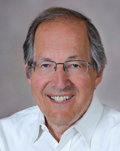Wellbeing Without Pills
Complementary therapy is becoming a more widely-explored area in terms of medical research

Dr. Barry Oken, director of the Oregon Center for Complementary and Alternative Medicine in Neurological Disorders (ORCCAMIND), explains how complementary therapy is becoming a more widely-explored area in terms of medical research
What is the aim of the ORCCAMIND project?
We’re trying to organise a centre that is focused on research and training in complementary therapies for neurological disorders and stress. The centre has broader interests in general, but my specific lab is interested in mind/body therapies.
How did you move out of conventional medicine into this field?
I guess I saw the opportunity as a very unexplored area with benefits. Some of the complementary therapies do have very valid benefits and it seemed as if it was a very open area of research. From a personal point of view, I had an interest in yoga and the scientific opportunity was a major part of it.
It is estimated that almost 50 percent of Americans use complementary therapies. Why do you think this is so?
I think that there are a couple of things here. One is that they want to take care of their own health and wellbeing without taking a pill; it’s a case of taking charge – what we call self efficacy. The other thing is that these therapies are good for disorders that conventional therapy does not have a very good track record with, for example chronic lower back pain. Historically, it’s been poorly treated with conventional therapy. The inclusion of chiropractic and acupuncture has been a useful adjunct. Many conventional medical centers now offer these therapies.
What do you think of the labels such as ‘alternative’ and ‘complementary’ – are they useful?
Initially the title was alternative, but that was frowned upon. The idea was to have both working together – complementarily. Complementary became the major term and it was accepted. I was OK with that, but there is a push now for integrated medicine, merging the two systems if you like. Some organisations such as NIH are now wondering if Complementary and Alternative Medicine (CAM) are the best terms.
How do you measure your success rate?
I think it helps with a sense of wellbeing – especially in non-specific symptoms such as fatigue. As far as specific symptoms are concerned, I’ve not done formal evaluations but some of the studies have resulted in changes to conventional clinical care. For example, physical therapists have incorporated chunks of yoga into their treatments.
What can you tell us about mindfulness training?
Most of the clinically used mindfulness training have two components: bringing your attention to your current moment; and not attaching an emotional tag to your observations. So, for example, if your spouse starts yelling at you because they have dementia, the idea is to almost shrug your shoulders and not attaching an emotional tag to your observations. It’s very useful to situations where you have stress. We have one study on post-traumatic stress disorder and I think it will be helpful there.
How has your work been received among the more conventional medical sectors?
The better studies are received well among clinicians. I think that some academics look down upon it, and also some within the complementary medicine field do that too. We’re kind of stuck between the two camps. Sometimes we take hits from both sides – I guess that’s a good sign!
Can you tell us a little about your partners in this project and what they contribute?
ORCCAMIND has been developed in part because of its linkage to the complementary medicine institutions. Portland is fortunate in that we have three other doctorate granting complementary medicine institutions in town (oriental, chiropractic and natural medicine) and I think that linkage has been helpful us to guide us in terms of our herbs and botanical studies, for example. Sometimes in conventional medicine, they are not quite in tune to the finer points of botanical therapy - even some NIH funded trials have not had the correct attention to detail for the dietary supplements. Having that linkage between the institutions provides us access to carry out that sort of research.
Have you faced any obstacles?
One of the issues we face is that, with complementary work, it’s almost on the edge of funding – who funds it and who doesn’t? I should explain that sometimes the research falls under the remit of health promotion and it’s unclear who funds that kind of stuff. NIH becomes a moving target for funding complementary medicine – which organization will fund what you’re trying to achieve?
What’s the broader impact of your work?
Well, for example, I performed one study using yoga in multiple sclerosis sufferers, and at the time it was thought that those with multiple sclerosis shouldn’t exercise as it would worsen their symptoms. It became clear from my study that physical exercise was in fact beneficial and it has now become a standard aspect of clinical care.